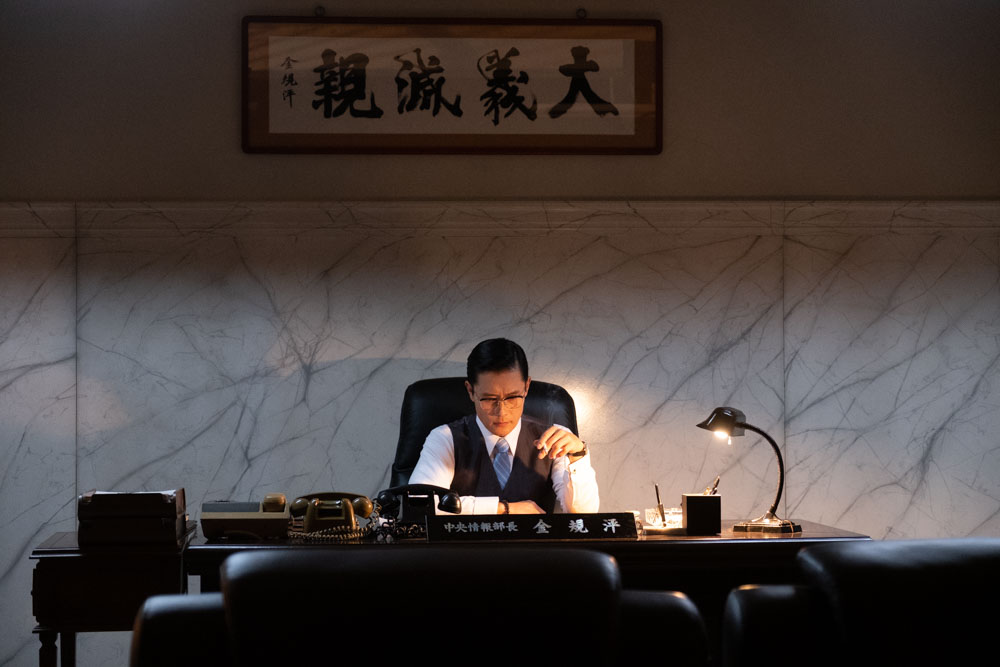
- Golden Globe Awards
The Man Standing Next (South Korea)
At 7:40 PM, on October 26, 1979, South Korea’s President Park Chung-hee was assassinated by Kim Jae-gyu, director of the KCIA (Korean Central Intelligence Agency, thereby ending an 18- year long dictatorship. The Man Standing Next dramatizes the 40 days leading up to the murder. It shows the behind-the-scenes maneuvers taking place in the entourage of the Nation’s leader, the intricate web of rivalries between the men in his inner circle, and what possibly motivated Kim, the second highest-ranking official in the government, to commit such an act.
Woo Min-ho (Inside Men, The Drug King) delivers a tense political thriller, revisiting a well-known event that shook his country and that is to this day the subject of many conjectures and theories.
South Korean star Lee Byung-hun (seen in I Saw the Devil, The Magnificent Seven and many more) plays a fictionalized Kim Jae-gyu, renamed here Kim Gyu-pyeong, the eponymous man standing next, as an opaque figure, a tragic protagonist – a flawed man seemingly plagued with indecision, who feels more and more threatened in his position, increasingly sidelined and alienated, as he repeatedly clashes with the brutish President’s chief bodyguard, Gwak Sang-cheon (based on the real-life Cha Ji-cheol who was killed by Kim alongside Park). On a side note, he was hung on May 24, 1980, after an expedited trial.
Woo Min-ho saw the film as a Shakespearean tragedy in a way. “I definitely referenced Hamlet when I was creating Kim’s character. He is always thinking, always torn, in trouble or agonizing, and he has a hard time making decisions as well which end up leading him to a very tragic end.”
Astute cinephiles will no doubt find echoes of Alan J. Pakula’s The Parallax View in the film as well as Francis Ford Coppola’s The Conversation. “In terms of style, I tried to shoot as minimal as possible,” the director says, “and I was influenced by Jean-Pierre Melville and Bernardo Bertolucci’s The Conformist.”
Even though the film is based on real events and adapted from a non-fiction book, Chiefs of Namsan by investigative reporter Kim Choong-seek published in 1990, Woo changed some of the real protagonists’ names. A choice that he justifies as a necessary artistic license while still allowing him to objectively depict the incident. Unlike Im Sang-soo’s The President’s Last Bang, which highlighted the absurdity of absolute power through satirical black comedy with the same premise, The Man Standing Next could be seen more as a docufiction. Woo Min-ho’s goal is not to give a history lesson, but to make the audience understand the human aspects of the story.

